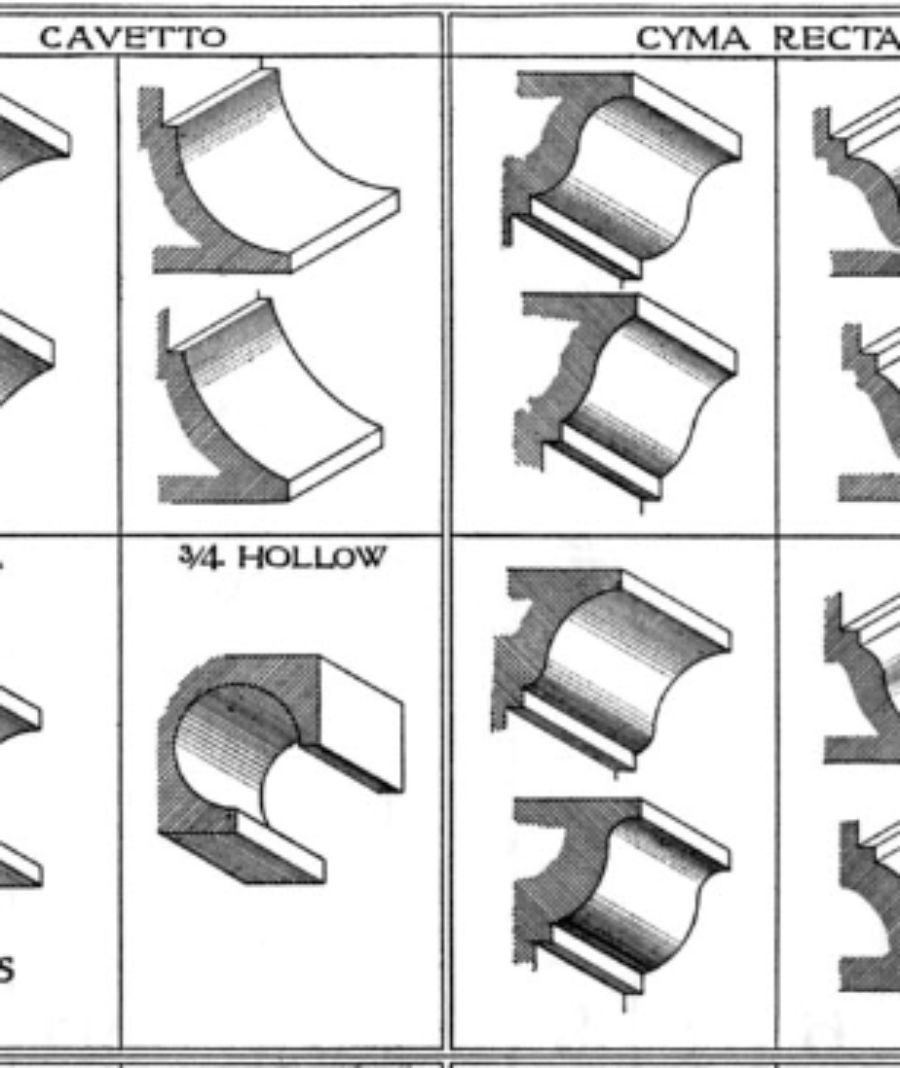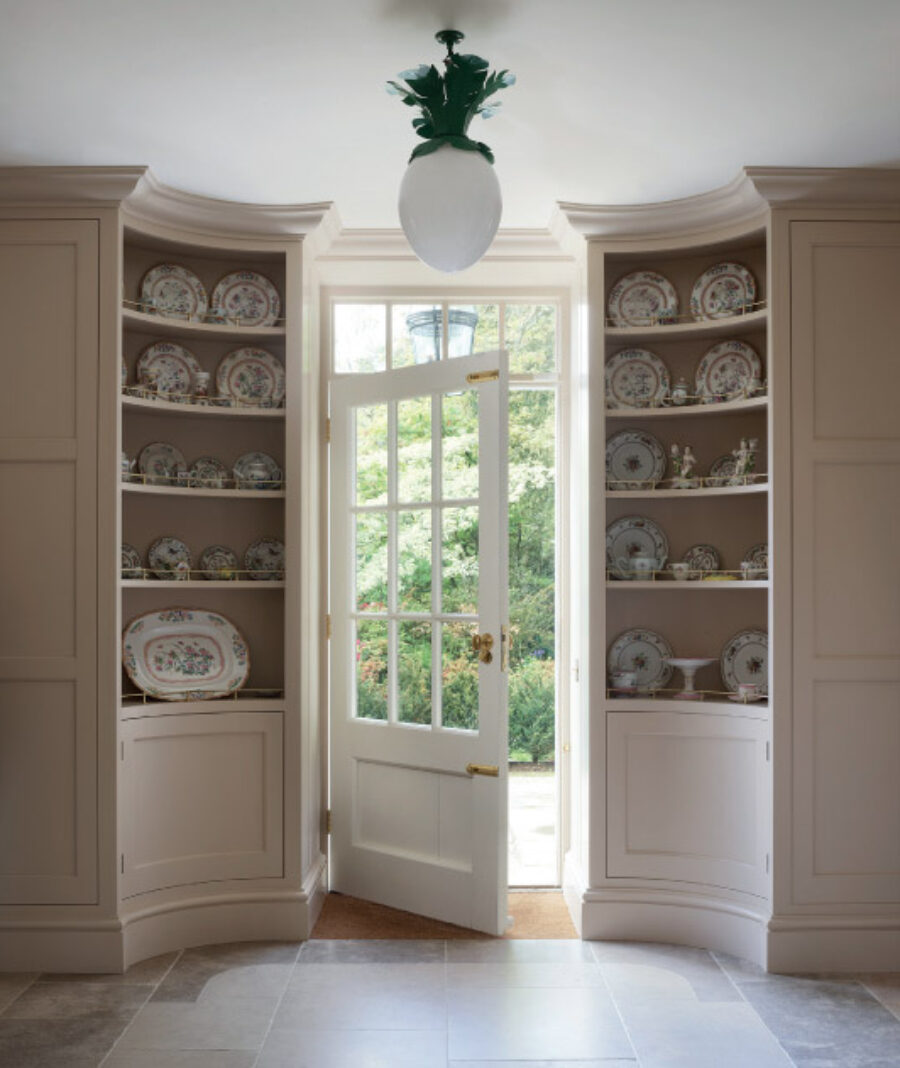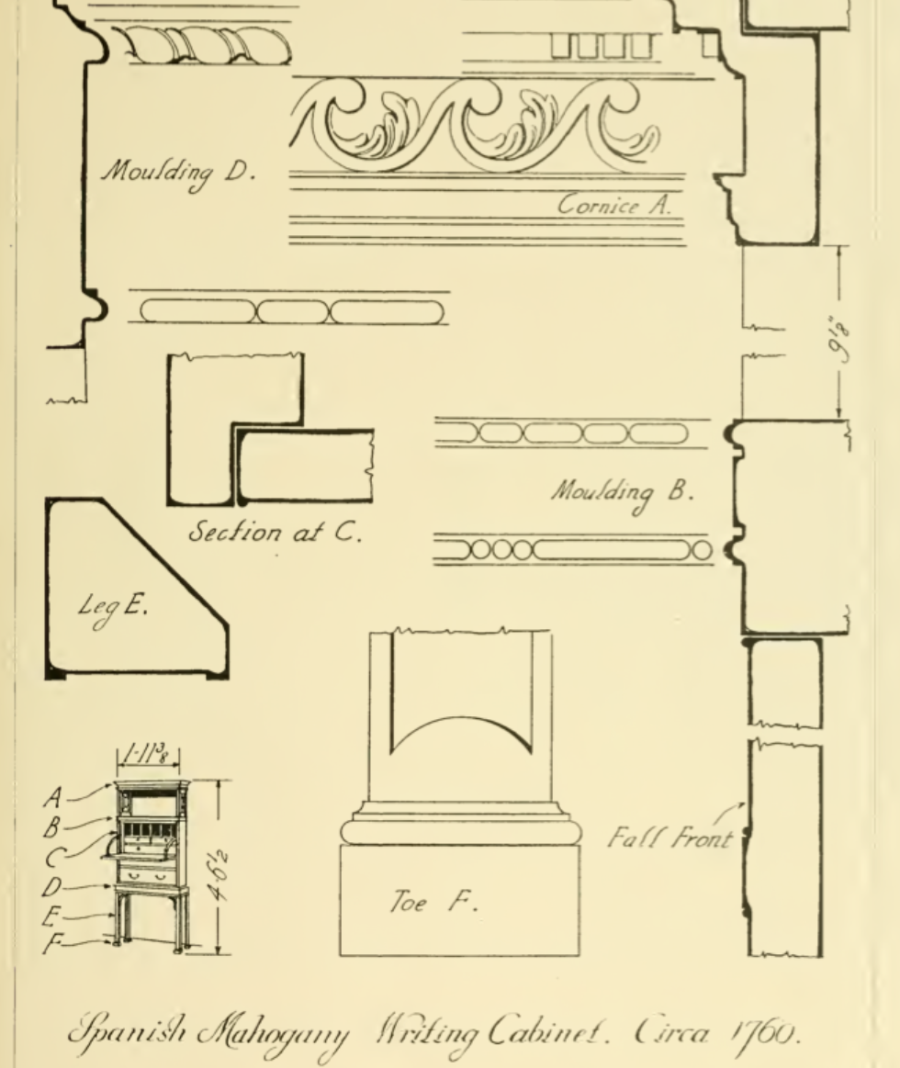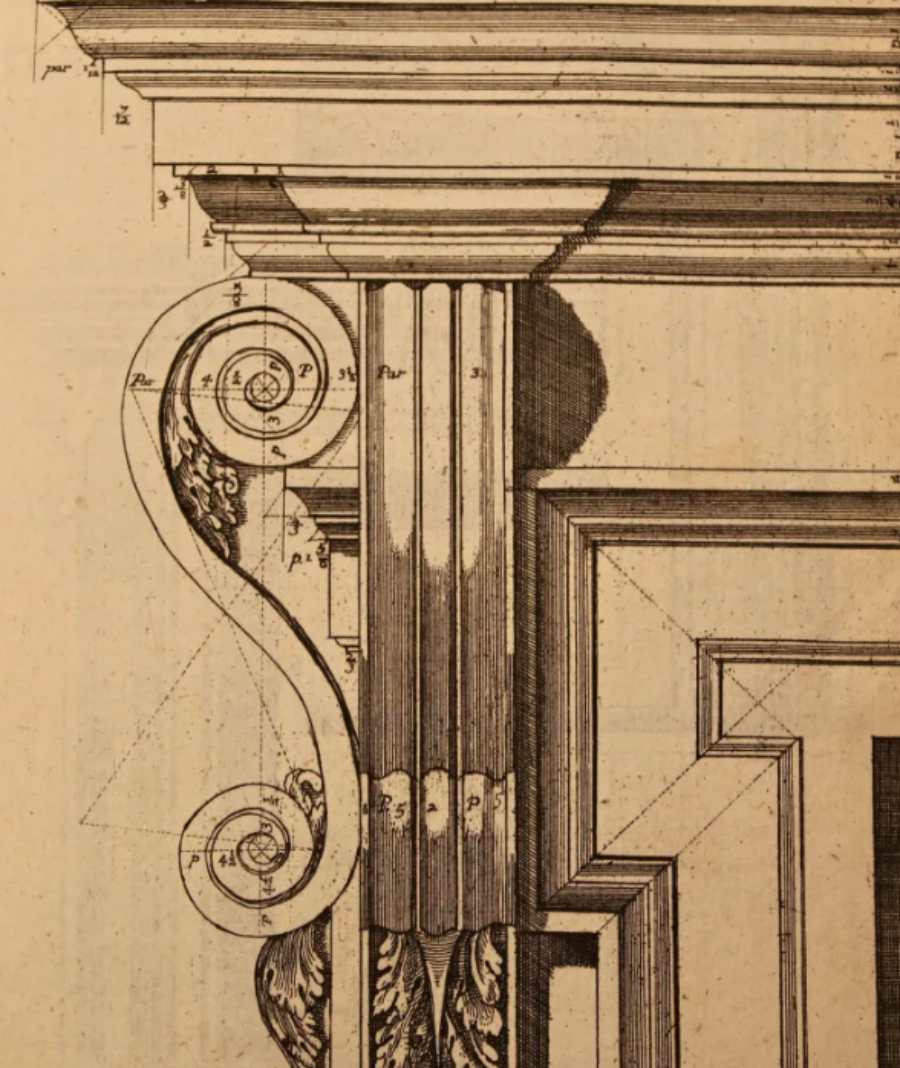Journal
In the realm of interior and kitchen design, light and shadow play a pivotal role in creating ambiance, visual interest, drama and depth in a room.
One timeless technique, which has been employed for centuries to harness the power of shadows, is the use of period mouldings which we use a lot of in our work. Used as both architectural devices and often trickery to hide joints, they are typically made of wood or fibrous plaster. They not only add character and charm to a space but also provide a canvas for captivating interplays of light and shadow.
In this blog we will explore the art of designing with period mouldings to create shadow to elevate kitchens and interior spaces.

UNDERSTANDING PERIOD MOULDINGS
Before delving into the world of shadow design, it is important to explore the concept of period mouldings. Chiefly decorative trim elements but also to disguise and decorate architectural structure, they are most often found in historic and period architecture and furniture. They serve both functional and aesthetic purposes.
Typical mouldings include skirting, room cornicing, chair rails (dado), architraves and door panel moulds, ideally with complimentary shape and detail between them. When properly incorporated into kitchen and interior design, these mouldings can enhance the visual appeal of a room.
As with all periods of interior design, the style, shape and proportion of these mouldings varied from period to period as fashions ebbed and flowed. Often with original roots in Roman and Greek classical architecture, these shapes were altered and adjusted from period to period and from country to country.
Period mouldings have evolved as fashions come and go to include scores of details allowing light and shade to interplay across their surface.

HARNESSING LIGHT
To use period mouldings effectively in household interiors, it is sensible to start by assessing the natural light sources in your room. The position and intensity of sunlight throughout the day can cast beautiful shadows on mouldings. Designers will often consider strategically placing mouldings near windows to maximise the play of light and shadow in a room.
The position of decorative lighting also has a part to play. While sunlight is often casting shadow from above (or horizontally in Winter months) decorative lighting is often lighting them from below, causing different shadows to appear. Installing hidden LED strips or spotlights behind mouldings casts striking artificial shadows during the evening or in areas with limited natural light, although caution should be advised to do this sensitively. LEDs are a modern invention and they might fight with the sensitivity of a period interiors.
This all sounds rather geeky of course, but architectural joinery usually sets the tone for any space. All rooms, before they are decorated, present simply as boxes with windows and doors, and it is often the mouldings which set the canvass for interior decoration.
Period moulding designs have evolved over time to reflect the changes in architectural styles

CHOOSING THE RIGHT MOULDING PROFILES
The choice of moulding profiles is important in creating striking shadow effects and it can all seem a bit of a minefield. Scale and proportion are the main things to consider. In a space with tall ceilings, a taller skirting should be deployed to match the room’s scale, particularly in a principle living room room.
In large country houses it is typical for the ceiling heights, and consequently the skirting heights, to reduce in height and decorative detail as one rises up the floors. In stately homes with servants quarters often on the top floor, the architectural joinery often ended up devoid of any meaningful decoration at all, and was simply there to cover up the junction between the wall and the floor (a skirting board’s main job).
If period authenticity is needed in a project you are undertaking, it is sensible to speak to a company like Atkey and Company and get some advice on which sets of period mouldings you want to deploy. Sometimes this information can be gathered from what was already there, but in a new build, you’re starting with a blank sheet of paper and advice should be sought from a professional to ensure the rhythm and flow of the mouldings through the house have a consistency.
Period mouldings were used as visual cues to inform visitors which rooms they were allowed to visit

LAYERING MOULDINGS
One design technique which enhances shadow play is layering mouldings; that is combining multiple moulding profiles or stacking them to create depth and dimension in a room. This is often evident on the grand architraves around ground floor doors in country houses. While the architrave appears as one piece of timber, it will almost always be made of many individual mouldings stacked together.
ARTFUL PLACEMENT
Consider the placement of your chosen period mouldings strategically. Framing architectural features like arches, doorways, or alcoves with mouldings to draw attention to these areas. The shadows created around these focal points will become captivating design elements in their own right.
The art of designing with shadows using period mouldings adds depth, character, and visual intrigue to interior spaces. By harnessing natural light, choosing the right moulding profiles, layering and experimenting with placement, you can create captivating shadow effects which elevate the overall ambiance of your home and set a tone. Period mouldings not only honour architectural traditions but also provide a timeless canvas for interior design creativity to shine through.


